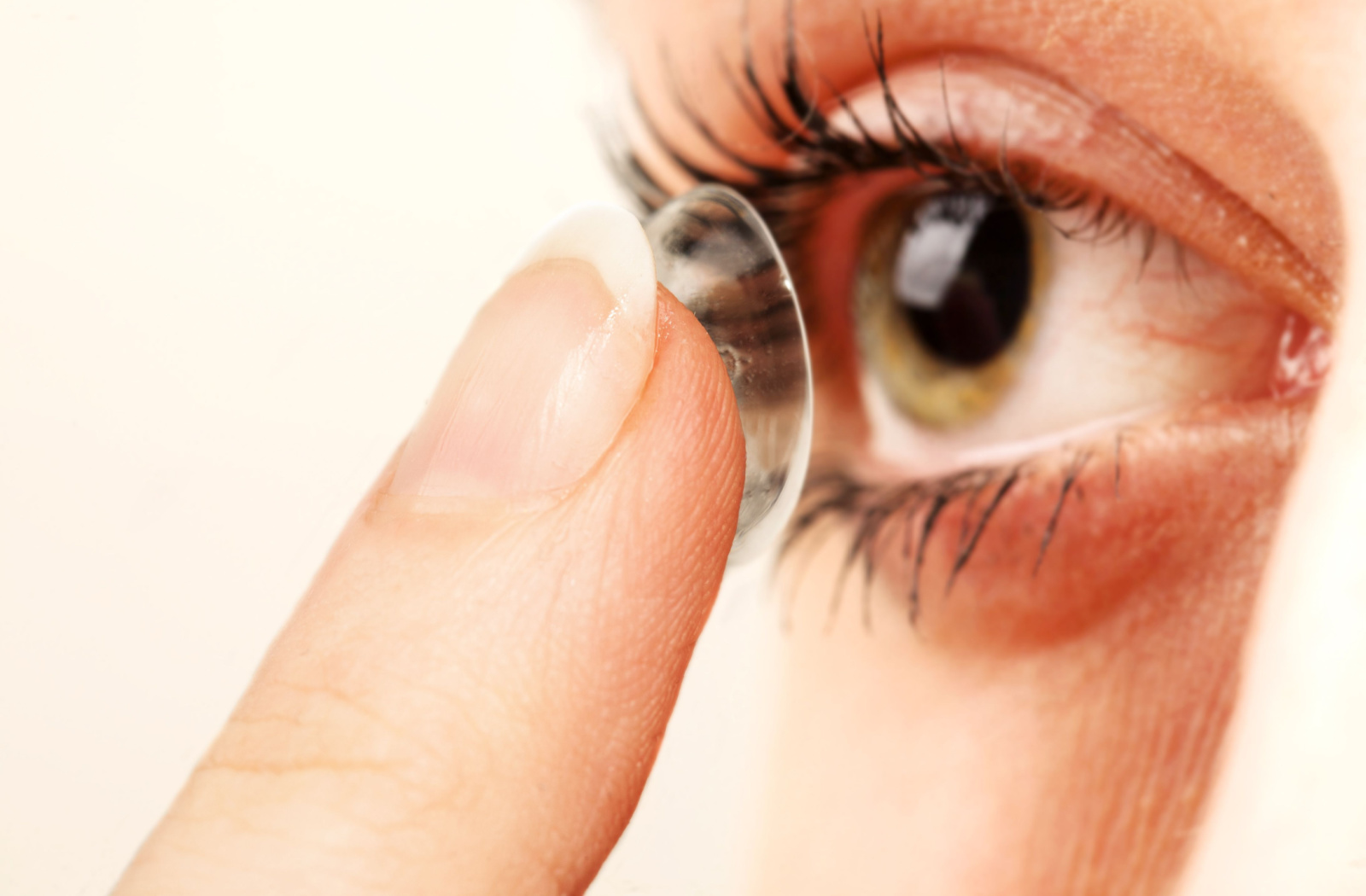Contact lenses can be a convenient alternative to more traditional forms of vision correction. They’re comfortable, convenient, and let you keep your natural look.
But there isn’t just one type of contact lens—there are types for every situation, including:
- Daily lenses
- Gas-permeable lenses
- Multifocal lenses
- Scleral lenses
- Toric lenses
- Coloured lenses
It’s essential to schedule a contact lens fitting and exam with your optometrist to determine the right lenses for you!
Daily Lenses
Daily lenses are one of the more popular types of contacts. These lenses are designed to be worn for one day and discarded afterward. They’re often made from silicone hydrogel, a soft material designed to be extremely comfortable for an extended period of time.
These lenses are convenient because you don’t have to worry about cleaning and storing them properly. Instead, you simply dispose of them once you’re done wearing them. And because they’re designed to be comfortable, they’re a common choice for people with allergies or naturally-sensitive eyes.
Gas-Permeable Lenses
Gas-permeable lenses, commonly called rigid gas-permeable lenses, or RGP lenses, are made from a durable material. As the name suggests, this material allows oxygen to pass through the lenses to help keep the eye healthy.
These lenses are designed to last longer than daily lenses. However, because the material is more durable, they typically take a little longer to get used to than softer lenses. They also require careful cleaning and storage to keep the lenses safe to use. If you’re using these lenses, you need to:
- Wash your hands before and after handling the lenses
- Clean and store them using in-date materials
- Keep an eye on the expiration dates
Once you’ve adapted to the lenses, you can have a long-lasting option to give you clear vision!
Multifocal Lenses
As we get older, our eyes go through many complex changes. One common change is a small loss of elasticity in the eye’s natural lens. This is called presbyopia, which makes it difficult for your eye to see nearby objects or switch smoothly between focusing at different distances.
Multifocal lenses are designed to help correct this problem. These lenses have several prescriptions built into them, each designed to correct vision at different distances. There’s a smooth transition between each zone, and as you adjust to wearing them, you can seamlessly switch between viewing zones. These are ideal for older adults who want to avoid using reading glasses or bifocals.

Transition Lenses
Transition lenses, often called photochromic lenses, are just like other contacts—but with a unique twist. When they’re exposed to UV light, the lenses automatically darken.
This can give you protection from UV rays, protecting your eyes from the sun while giving you clear vision in different lighting conditions. Think of them like sunglasses in contact lens form! They’re perfect for outdoor activities or any situation where you’ll be switching between different lighting conditions.
Scleral Lenses
When you wear contacts, they rest against the surface of your eye. But what if you have easily irritated eyes or a problem with your cornea? Regular contacts can’t always help.
That’s when scleral lenses become ideal. These lenses are designed to rest against the whites of your eyes (the sclera) and arch over the cornea. They’re excellent for treating a wide range of vision problems, like astigmatism, irregular corneas, and dry eyes.
Because of their arch, they create a tiny fluid-filled gap between the lens and the cornea. This gap acts as a reservoir for your tears and helps keep your eyes hydrated and lubricated, making them ideal for people with more sensitive eyes.
Toric Lenses
Toric lenses are designed specifically to correct astigmatism—a condition characterized by an irregularly shaped cornea. These lenses have different focal powers at different parts of the lens.
Regular contacts are shaped similar to a slice taken out of a ball. One side is curved, while the other is relatively flat. Instead of this shape, toric lenses are shaped like a slice taken out of a donut. This shape is essential for correcting astigmatism because it helps match the curve of your eye.
Coloured Lenses
Coloured contact lenses offer a fun and versatile way to change your eye colour. Whether you want to enhance your natural eye colour or try something completely different, coloured lenses can help you achieve the desired effect.
However, many unreliable retailers sell these lenses for low prices, especially around Halloween. These outlets should be avoided. In Canada, coloured contact lenses are classified as a medical device—so to sell them, you must obtain a license. However, these regulations aren’t always followed, and the lenses aren’t guaranteed to be safe.
So, if you’re thinking about trying coloured contact lenses, visit your optometrist. They can recommend a safe set of coloured contacts and show you how to store and clean them properly. Don’t put your eyes at risk by buying from an unverified provider!
Try Contact Lenses Today
To find out if contacts are for you, come see our team at West Coast Optical. We are here to assess your vision and learn about your lifestyle to help determine a suitable lens type. We offer plenty of different options, so book a visit with us today!




